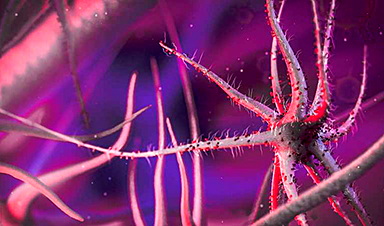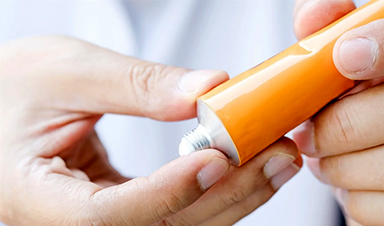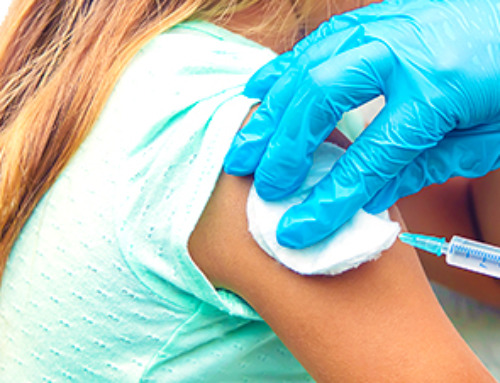Nanoemulsions are a relatively new technology that has found significant use for delivering functional chemicals such as micronutrients, flavorings, bioactive molecules, and antimicrobial agents into food and beverage products. This article focuses on applying nanoemulsions for sustainable food processing and packaging in the food sector.
What is a Nanoemulsion?
Nanoemulsions (NEs) are non-equilibrium dispersions of at least two immiscible liquids (oil and water) with droplet sizes of 10–100 nm that are kinetically stable. These nanoemulsions have revolutionized the pharmaceutical, healthcare, skincare and food businesses. They have several remarkable properties, including small droplet size, transparency, enhanced surface area, and reduced sensitivity to chemical and physical changes, making them ideal for food formulations.
Components for the Formation of Nanoemulsions
Core-shell architecture may be used to describe nanoemulsions, and it is made up of three phases: an oil phase (lipophilic), an aqueous phase (amphiphilic), and a surfactant (emulsifier/stabilizer) in precise proportions.
The features of the phases and surfactants should be considered when making nanoemulsions. Surfactants must be carefully selected to achieve an ultra-low interfacial tension (<10-3 mN/m) at the oil/water interface, essential for producing nanoemulsions. The physical and chemical parameters of the oil phase influence the development and stability of nanoemulsions.
Approaches for the Preparation of Nanoemulsions
The size of nanoemulsions is determined by the ingredients, operating circumstances, and technique of manufacture. High-energy or low-energy procedures can be used to make nanoemulsions.
Ultrasonication, microfluidization, and high-pressure homogenization are examples of high-energy procedures that use mechanical devices to disturb the oil phase, allowing it to interact with the water phase and create tiny oil droplets.
To make oil-in-water nanoemulsions, most food industries employ high-energy technologies. Nanoemulsions are made by changing the composition or temperature of the oil-water system in low-energy approaches, including phase inversion composition and phase inversion temperature.
Applications of Nanoemulsions in Food Industry
Most bioactive food components are prone to oxidative deterioration and degradation during food processing. Some bioactive have a low solubility yet a fast metabolism, lowering their bioavailability, whereas others are volatile and sensitive to processing conditions. Utilizing nanoemulsions to encapsulate bioactive chemicals in the food matrix can solve these obstacles.
Encapsulating a bioactive chemical protects it from processing conditions and prevents it from degrading for an extended period due to light, pH, temperature, and oxidative conditions encountered during storage.
Nanoemulsions are an effective method for increasing the digestibility of food and controlling the rate of release and absorption of bioactive chemicals in the gastrointestinal system.
Also, the bioavailability of active ingredients, the pharmacological activity of certain chemicals, and the solubility of pharmaceuticals are all improved by nanoemulsions.
Nanoemulsions can encapsulate useful chemicals and active substances, such as nutraceuticals and antioxidants. Additionally, they are beneficial for the controlled release of flavor components in foods.
Nanoemulsion based Food Packaging
Nanoemulsions can be integrated into coatings and films for possible food packaging applications. Foods such as dairy products, meats, fruit and vegetables can be coated with nanoemulsion-based edible nanocoatings containing flavor and coloring components, enzymes, antioxidants, and antimicrobials agents to extend their shelf life. Coatings can also limit gas exchange, moisture and food oxidation.
Commercialization of Nanoemulsion in Food Products
Nanoemulsions have been employed in food by companies like Nestle and Unilever, as well as a few start-ups. For example, Nestle’s design aids quick and uniform thawing of frozen foods in the microwave, while Unilever utilizes nanoemulsions in ice creams to reduce fat levels from 16 to 1%.
NanoceuticalsTM Slim Shake Chocolate was developed by RBC Life sciences. It utilizes the NanoClusterTM delivery method, which encapsulates dietary supplements in a nanoscale powder. LivOn Labs has created Lypo-SphericTM Vitamin C, which encapsulates Vitamin C using smart liposomal Nanospheres®.
Future Perspectives and Challenges
Nanoemulsions containing bioactive chemicals and functional food components have significant potential in the food and beverage industries. However, food grade nanoemulsions will find broad application only if their manufacturing costs are commercially viable and they fulfill the food industry’s safety regulations.
As a result, enhancing the bioactivity of the encapsulated components is essential for increasing production capacity. Additional research should be conducted to determine the biological events and the risks associated with nanoemulsion-based delivery technologies in food goods and packaging, with the goal of guaranteeing consumer safety.
News
Lower doses of immunotherapy for skin cancer give better results, study suggests
According to a new study, lower doses of approved immunotherapy for malignant melanoma can give better results against tumors, while reducing side effects. This is reported by researchers at Karolinska Institutet in the Journal of the National [...]
Researchers highlight five pathways through which microplastics can harm the brain
Microplastics could be fueling neurodegenerative diseases like Alzheimer's and Parkinson's, with a new study highlighting five ways microplastics can trigger inflammation and damage in the brain. More than 57 million people live with dementia, [...]
Tiny Metal Nanodots Obliterate Cancer Cells While Largely Sparing Healthy Tissue
Scientists have developed tiny metal-oxide particles that push cancer cells past their stress limits while sparing healthy tissue. An international team led by RMIT University has developed tiny particles called nanodots, crafted from a metallic compound, [...]
Gold Nanoclusters Could Supercharge Quantum Computers
Researchers found that gold “super atoms” can behave like the atoms in top-tier quantum systems—only far easier to scale. These tiny clusters can be customized at the molecular level, offering a powerful, tunable foundation [...]
A single shot of HPV vaccine may be enough to fight cervical cancer, study finds
WASHINGTON -- A single HPV vaccination appears just as effective as two doses at preventing the viral infection that causes cervical cancer, researchers reported Wednesday. HPV, or human papillomavirus, is very common and spread [...]
New technique overcomes technological barrier in 3D brain imaging
Scientists at the Swiss Light Source SLS have succeeded in mapping a piece of brain tissue in 3D at unprecedented resolution using X-rays, non-destructively. The breakthrough overcomes a long-standing technological barrier that had limited [...]
Scientists Uncover Hidden Blood Pattern in Long COVID
Researchers found persistent microclot and NET structures in Long COVID blood that may explain long-lasting symptoms. Researchers examining Long COVID have identified a structural connection between circulating microclots and neutrophil extracellular traps (NETs). The [...]
This Cellular Trick Helps Cancer Spread, but Could Also Stop It
Groups of normal cbiells can sense far into their surroundings, helping explain cancer cell migration. Understanding this ability could lead to new ways to limit tumor spread. The tale of the princess and the [...]
New mRNA therapy targets drug-resistant pneumonia
Bacteria that multiply on surfaces are a major headache in health care when they gain a foothold on, for example, implants or in catheters. Researchers at Chalmers University of Technology in Sweden have found [...]
Current Heart Health Guidelines Are Failing To Catch a Deadly Genetic Killer
New research reveals that standard screening misses most people with a common inherited cholesterol disorder. A Mayo Clinic study reports that current genetic screening guidelines overlook most people who have familial hypercholesterolemia, an inherited disorder that [...]
Scientists Identify the Evolutionary “Purpose” of Consciousness
Summary: Researchers at Ruhr University Bochum explore why consciousness evolved and why different species developed it in distinct ways. By comparing humans with birds, they show that complex awareness may arise through different neural architectures yet [...]
Novel mRNA therapy curbs antibiotic-resistant infections in preclinical lung models
Researchers at the Icahn School of Medicine at Mount Sinai and collaborators have reported early success with a novel mRNA-based therapy designed to combat antibiotic-resistant bacteria. The findings, published in Nature Biotechnology, show that in [...]
New skin-permeable polymer delivers insulin without needles
A breakthrough zwitterionic polymer slips through the skin’s toughest barriers, carrying insulin deep into tissue and normalizing blood sugar, offering patients a painless alternative to daily injections. A recent study published in the journal Nature examines [...]
Multifunctional Nanogels: A Breakthrough in Antibacterial Strategies
Antibiotic resistance is a growing concern - from human health to crop survival. A new study successfully uses nanogels to target and almost entirely inhibit the bacteria P. Aeruginosa. Recently published in Angewandte Chemie, the study [...]
Nanoflowers rejuvenate old and damaged human cells by replacing their mitochondria
Biomedical researchers at Texas A&M University may have discovered a way to stop or even reverse the decline of cellular energy production—a finding that could have revolutionary effects across medicine. Dr. Akhilesh K. Gaharwar [...]
The Stunning New Push to Protect the Invisible 99% of Life
Scientists worldwide have joined forces to build the first-ever roadmap for conserving Earth’s vast invisible majority—microbes. Their new IUCN Specialist Group reframes conservation by elevating microbial life to the same urgency as plants and [...]





















